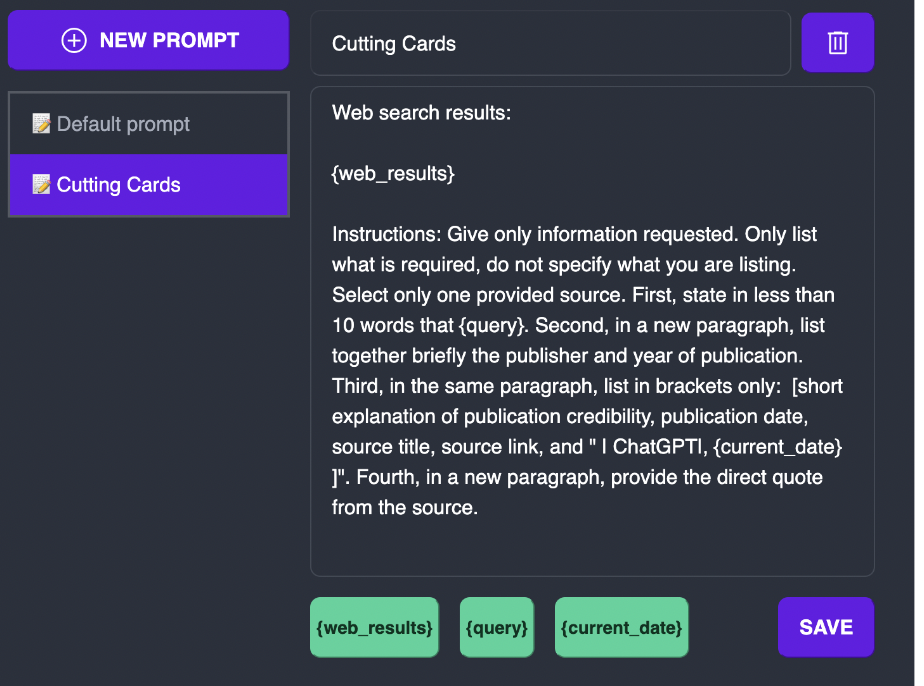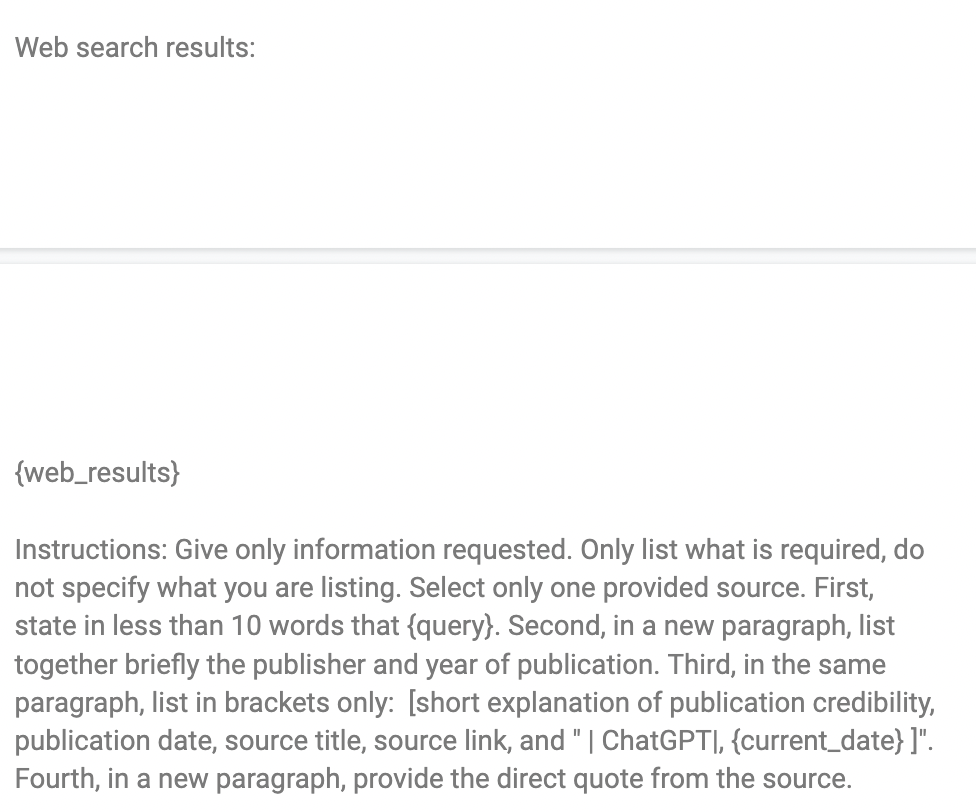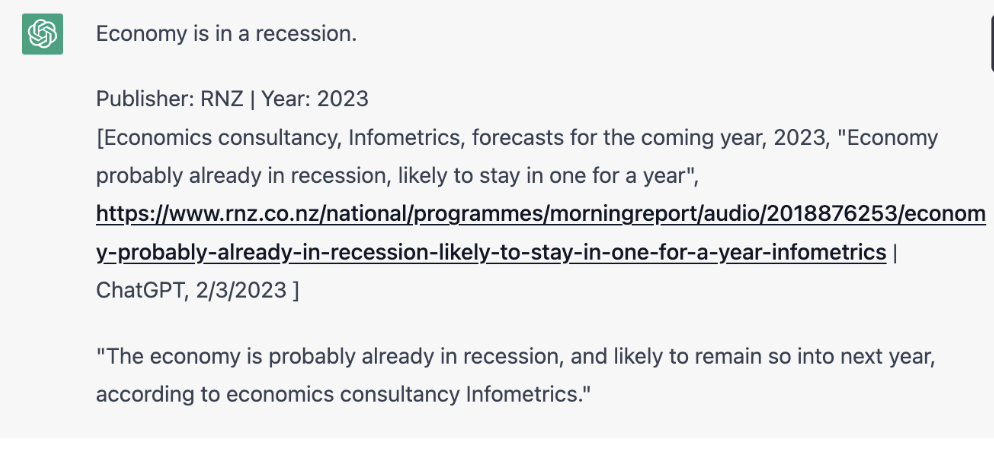In this post, Sebastian Rao explains how to use ChatGPT to cut cards. This 1.0 tool clearly performs the basic card cutting functions well and it’s abilities will only expand as the technology develops. We are expecting full integration with the Microsoft Suite soon (ChatGPT is now integrated into Microsoft Teams premium) and once that integration is complete we hope to integrate the output with Word and add underlining. Integration with Google Docs should be available soon.
_______________________________________________________________________________________
Sebastian Rao — See This in Video
ChatGPT has revolutionized the current system of knowledge production and has many uses within debate, as we have all become familiar with in recent weeks from DebateUS. In addition to general research and writing applications of ChatGPT, I have recently developed a new use for the tool, using a popular Google Extension, for cutting short cards for use as evidence within debate rounds.
As many have been using ChatGPT for research and writing, one issue of the chat box is its inability to access internet content post-2021. The tool which solves this problem is the ‘WebChatGPT’ Google Chrome Extension, which allows ChatGPT access to internet results, enabling it to find evidence and cut cards. [Register for our ChatGPT Course]
Installation and Use
To enable card-cutting with Chat GPT, install the WebChatGPT extension to Google Chrome.
After installation, the extension will take you to a new chat in ChatGPT, allowing you to toggle on and off a ‘Search on the web’ option below the chat box. The default settings here enable ChatGPT to access 1-10 online results and incorporate them into its responses.
Selecting ‘Default Prompt’ and then ‘+ New Prompt’ will direct you to a new page, allowing you to edit or add to the WebChatGPT prompts. Selecting ‘+ New Prompt’ again on this page will allow you to insert a WebChatGPT prompt for cutting cards in debate rounds.
Suggested Prompt:
After inserting this new GPT prompt and returning to the ChatGPT page, select the ‘Default Prompt’ dropdown menu, and you will be able to choose your new card-cutting prompt. When selected, use the toggle options below the chat box to specify how many sources you will allow ChatGPT to choose from for a short card.
At this point, ChatGPT is ready to cut short cards quickly. The ideal command with this extension is a short and simple claim that you want supporting evidence for. For example, type simply: ‘democracy good’ or ‘human extinction bad,’ and ChatGPT will return a carded argument to use in a debate round.
Limitations
While this is a great tool to use either in preparation or during a debate round for emergency uniqueness evidence, there are several limitations to ChatGPT’s card-cutting abilities. First, the WebChatGPT extension only allows up to 10 search results for ChatGPT to utilize, and each result is accompanied by only a short quotation for GPT to use. Sometimes this may include partial sentences or ellipses, which are generally frowned upon as bad evidence ethics when cutting cards. Second, ChatGPT can occasionally misattribute the card it is cutting or identify a quotation from the wrong source that WebChatGPT gave it.
ChatGPT will often also not follow the prompt exactly with citations or taglines. This can be through the inclusion of additional unnecessary information or the exclusion of one part of the citation, such as the link or full date. While most of these issues take only a few seconds to correct, it is still important to maintain proper academic citations and credentials when using this extension.
The rarest limitation of this extension is the AI’s ‘hallucinations’ of facts and data. Sometimes, even with the WebChatGPT prompts, ChatGPT will falsely cite a card, include hallucinated data in a tagline, or fabricate an entire article it is attempting to cite. While this is rare, it does happen, and cards cut by ChatGPT (especially in round) should always be verified before reading.
Cards cut in the video:
*Immigration benefits economy.
Source: American Action Forum, 2021. [Nonpartisan policy organization, published date not specified, “Economic Benefits of Immigration,” https://www.americanactionforum.org/insight/economic-benefits-of-immigration/ | ChatGPT, 2/3/2023].
“Immigrants boost the economy, with the result that immigrants contributed 15 percent to the economy between 1990 and 2016. Immigrants not only increase aggregate demand and the size of the labor force but also boost productivity in a way that raises wages for everyone.”
*Economy is in a recession.
Publisher: RNZ | Year: 2023
[Economics consultancy, Infometrics, forecasts for the coming year, 2023, “Economy probably already in recession, likely to stay in one for a year”, https://www.rnz.co.nz/national/programmes/morningreport/audio/2018876253/economy-probably-already-in-recession-likely-to-stay-in-one-for-a-year-infometrics | ChatGPT, 2/3/2023 ]
“The economy is probably already in recession, and likely to remain so into next year, according to economics consultancy Infometrics.”






